Okayama is a prefecture nestled in the heart of western Japan. Being the prefecture with the least rainfall in Japan, it is known as the Land of Sunshine and is home to lots of fruit orchards and farms. During this trip, we were lucky enough to visit one and pick Pione grapes! If you can, you should visit too, not just for grapes, but for their famous classic white peaches during early summer.
After leaving Hiroshima, we had crossed the Seto Inland Sea and travelled southwards to Ehime. Now, we were leaving Ehime in a northeasterly direction, and crossing the sea again to get to Okayama, which located eastwards of Hiroshima. At the end of the tour, we would simply travel westwards on land back to Hiroshima Airport to catch our SilkAir flight home.
We had unfortunately just missed Okayama’s season for white peaches, but as you can see from our itinerary below, there was still plenty else to do.
Point 11: Kurashiki historical area
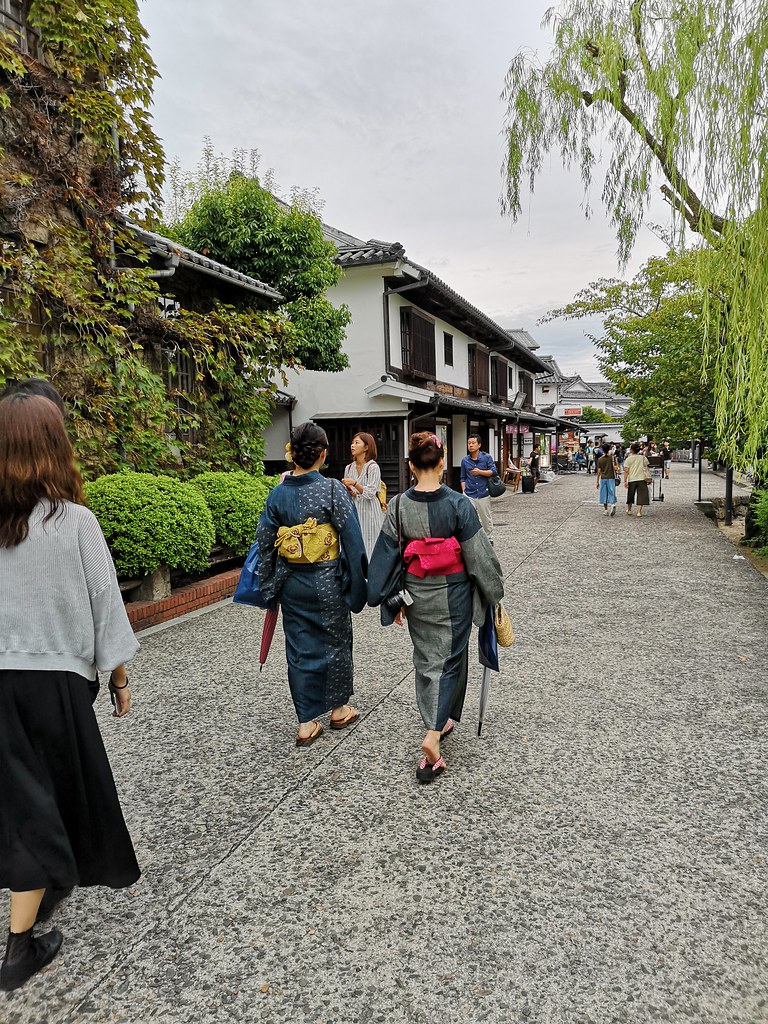
After Ehime, we drove 2h 15 min northeast to the Kurashiki historical area in Okayama. This vast shopping district deserves a good half day, if not, one full day. The very first place you should make a beeline for is the Okayama Fruits Menu Parlor (Kudamono Komachi Soft Serve Store) at Kurashiki Yoimachi Garden. Order the bestseller, the signature parfait (900 yen), which contains nine seasonal fruits.
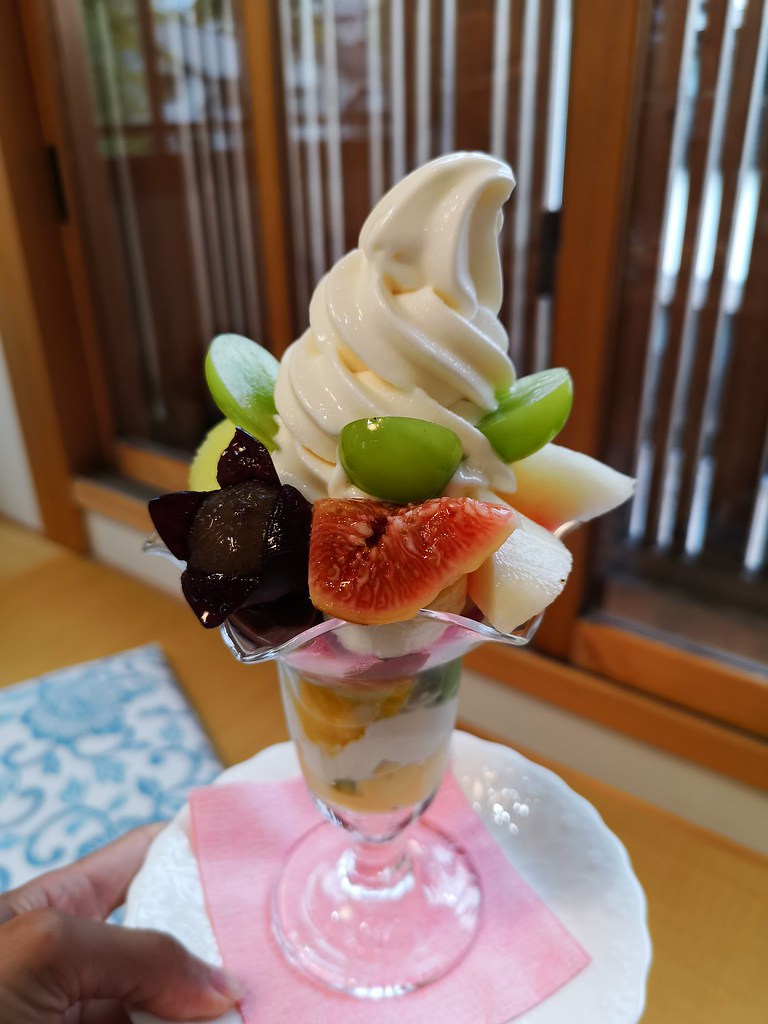
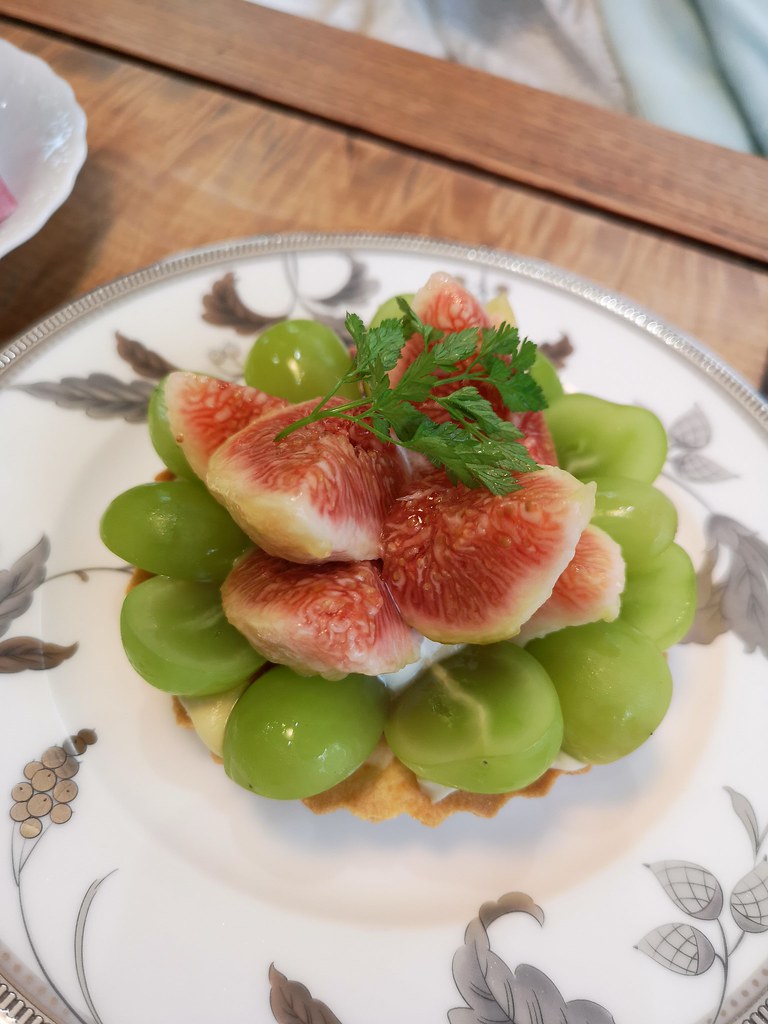
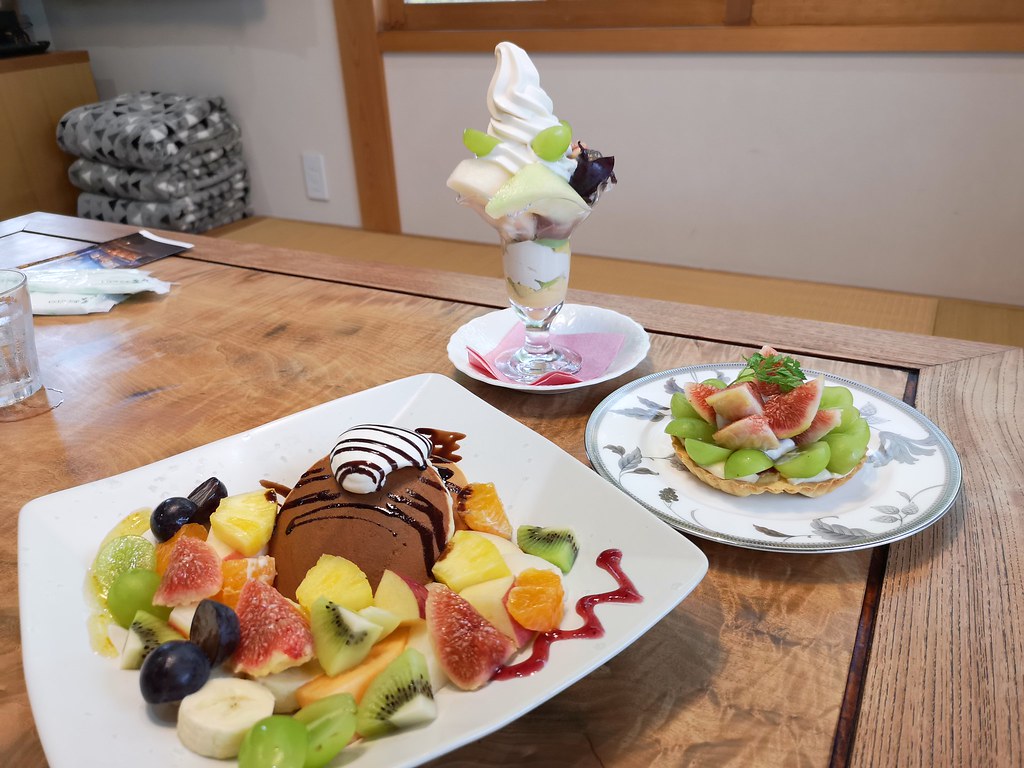
Other than soft serve ice cream, the parfait also contains matcha pudding, panna cotta, mango pudding and chocolate mousse. You won’t find fillers like cornflakes inside. Its milk soft serve ice cream is made with the milk from Jersey cows, and when we visited, they also had a peach flavour. Both were sublime. Its secret – the ice cream is made from fresh fruit juice and not concentrate. Okayama Fruits Menu has a number of outlets across the prefecture which also carry muscat grape and pione grape flavours, which you should certainly look out for. The parfait, fruit sandwich, panna cotta and fruit punch are sold out before 4pm at the parlour at Kurashiki Yoimachi Garden, so go early to avoid disappointment. If you’re lucky, you may be able to catch a free concert in the bamboo grove.
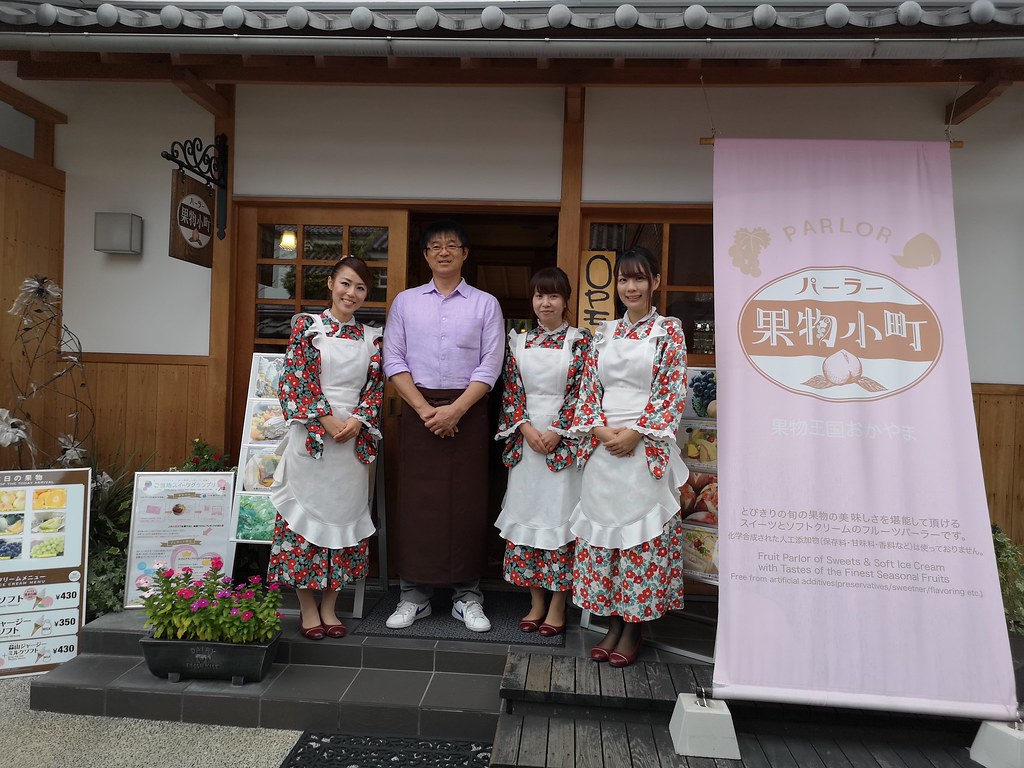
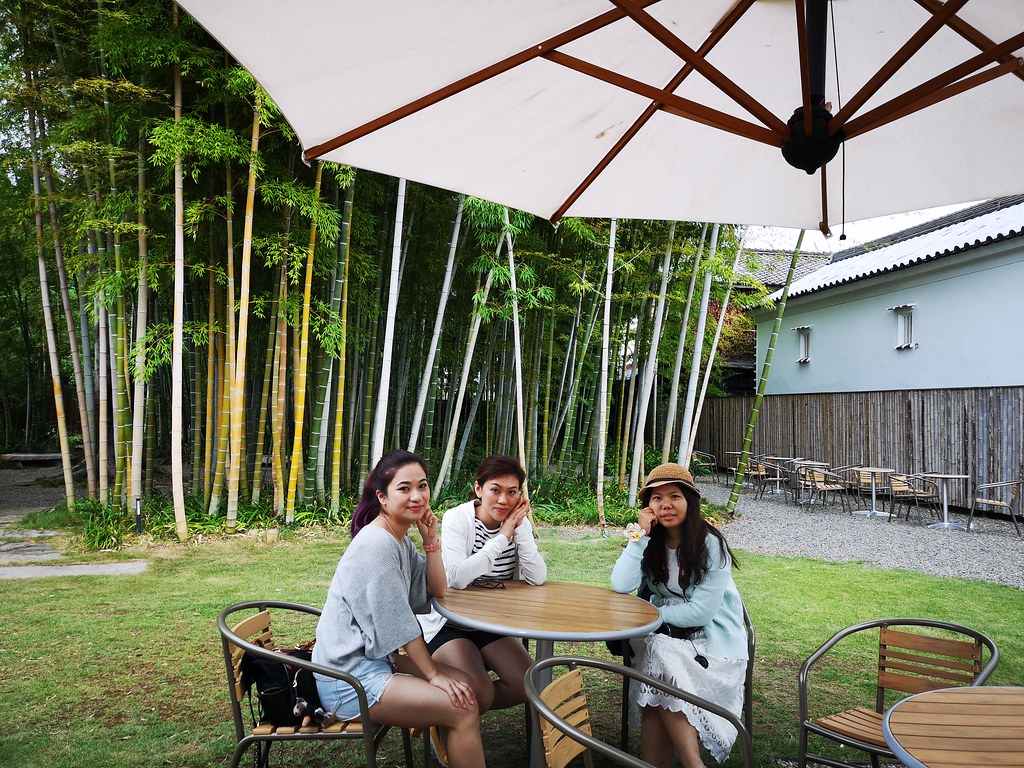
After replenishing your energy with all that fruity goodness, it’s time to stroll through the picturesque Kurashiki area, which is a treasure trove of novelty and specialty shops. Head to the denim alley to pick up some super soft Japanese denim apparel. Stationery collectors and scrapbook/journal aficionados will love the well-stocked sundry stores selling all sorts of miscellaneous items. My personal favourite is a small shop selling accessories made with lacquered flowers and leaves. Even if shopping is not your thing, you will love strolling by the canal and watching the swans. We wished we could have a few more hours there, but the shops close before sunset.
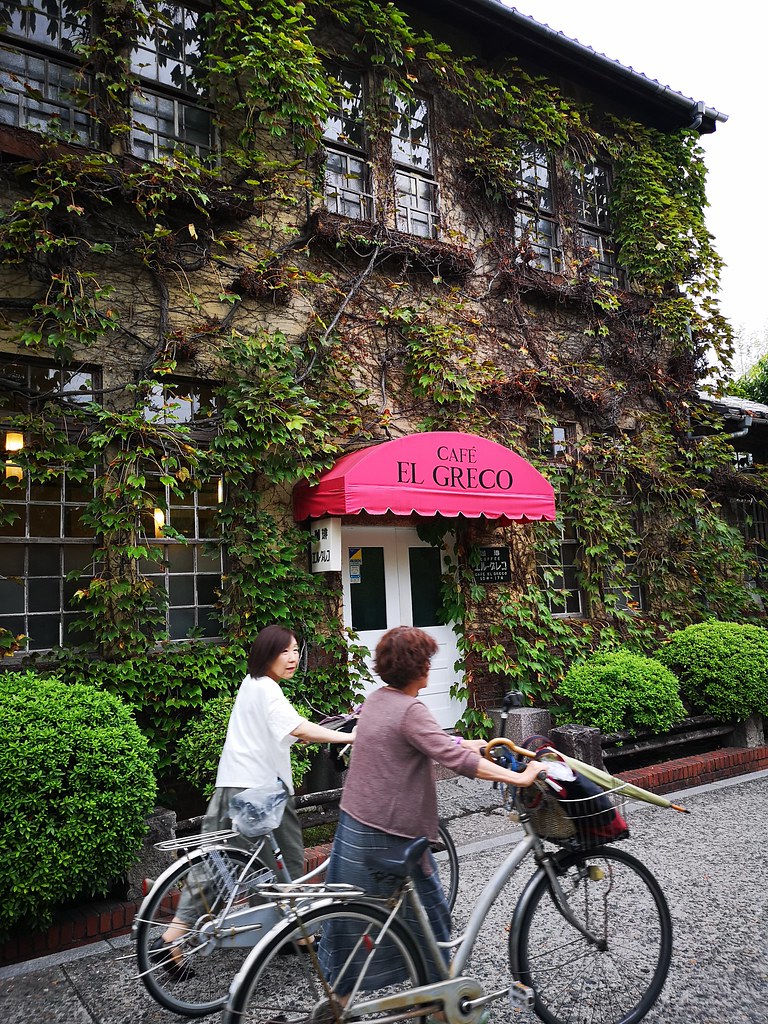
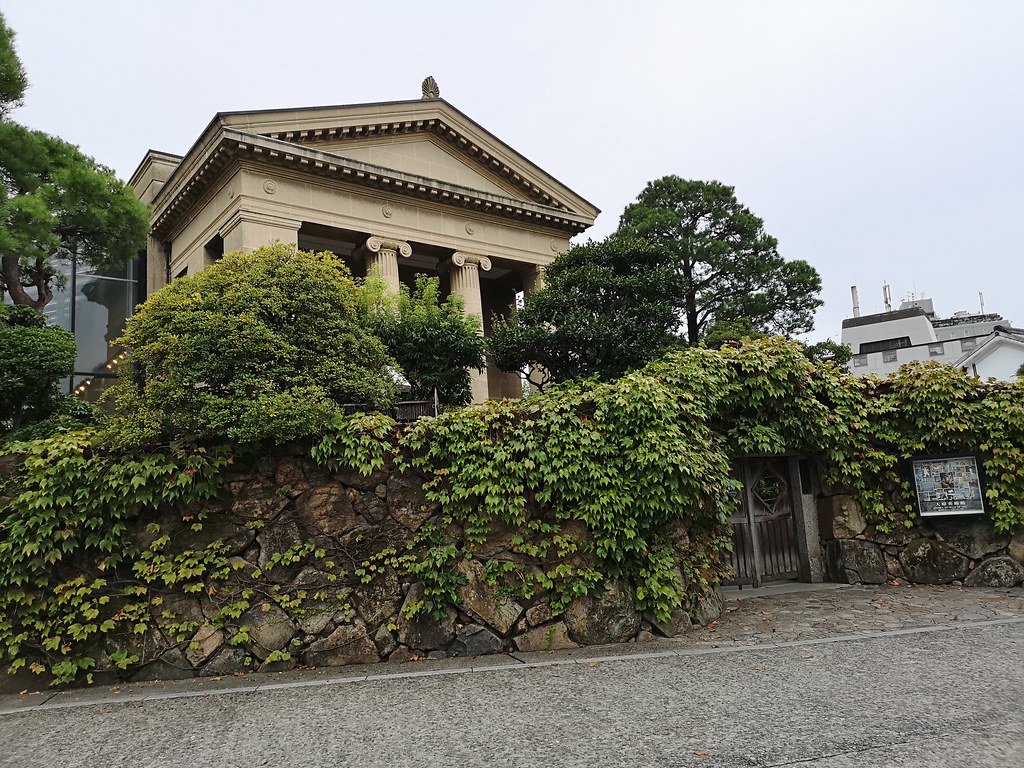
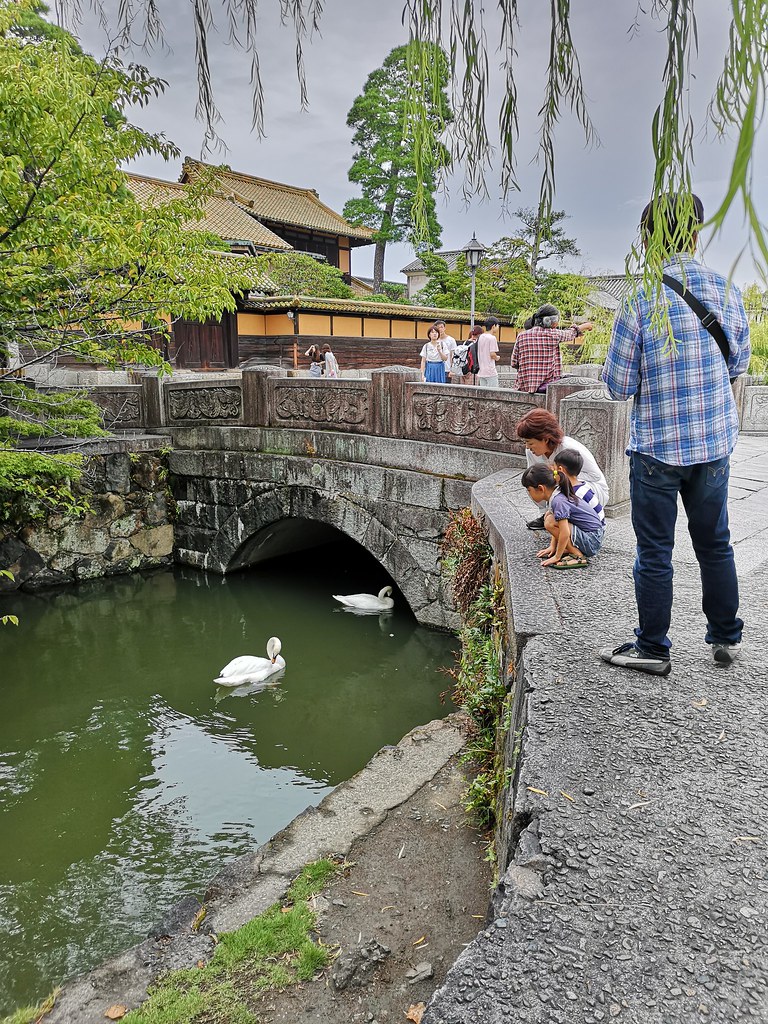
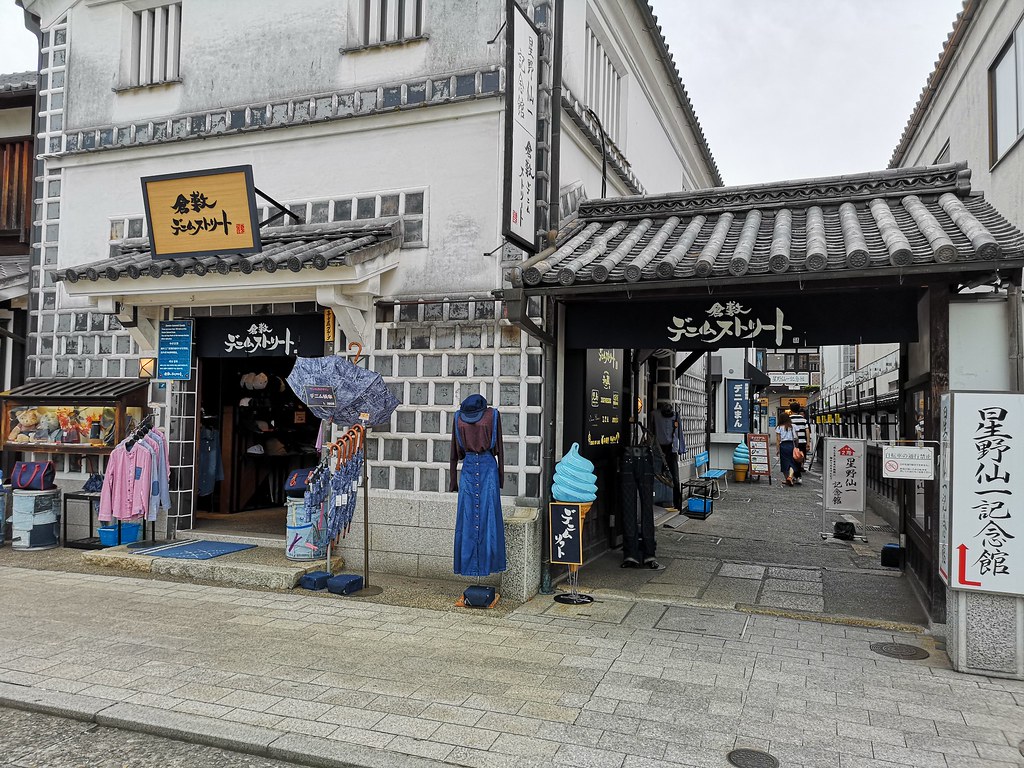
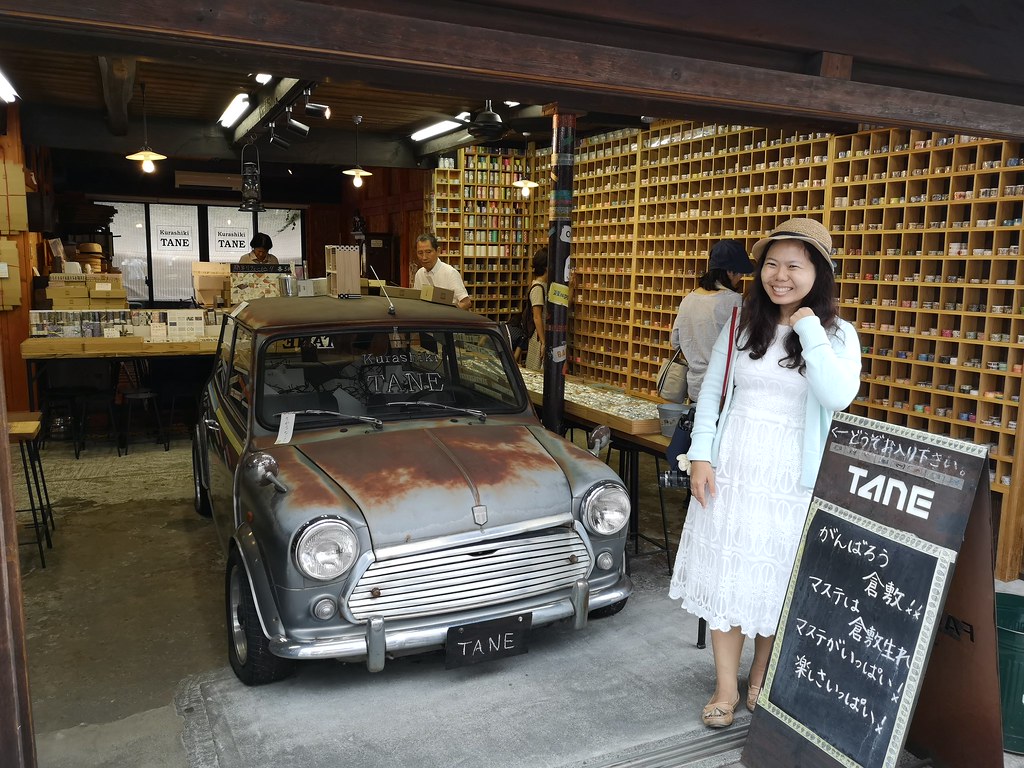
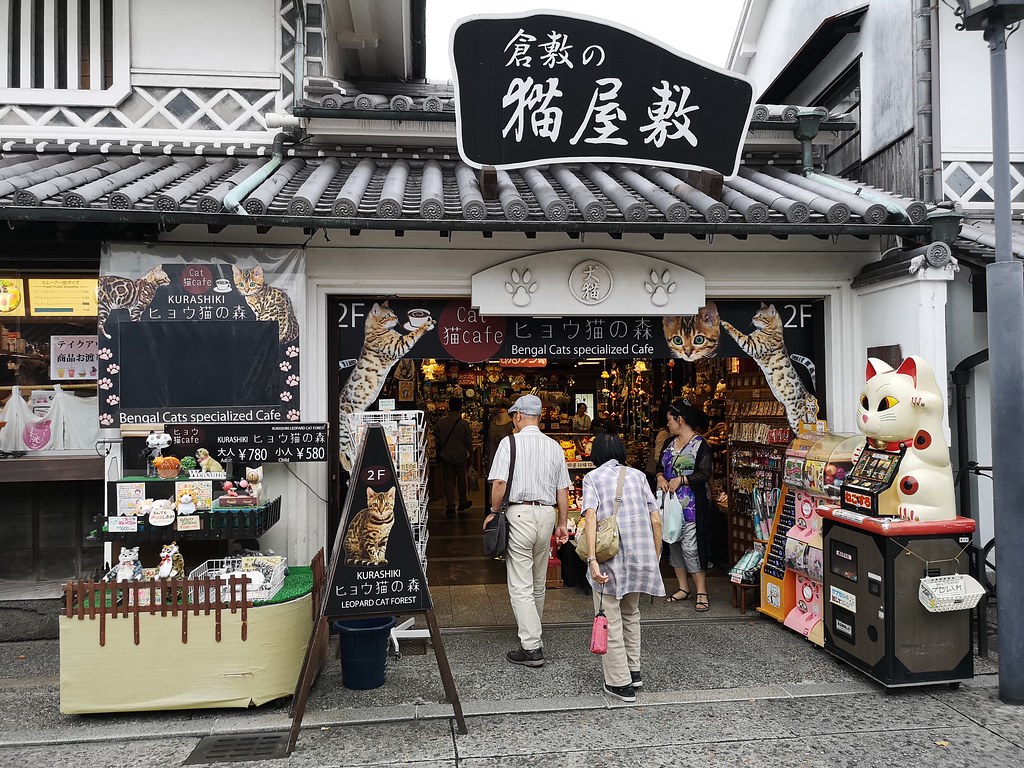
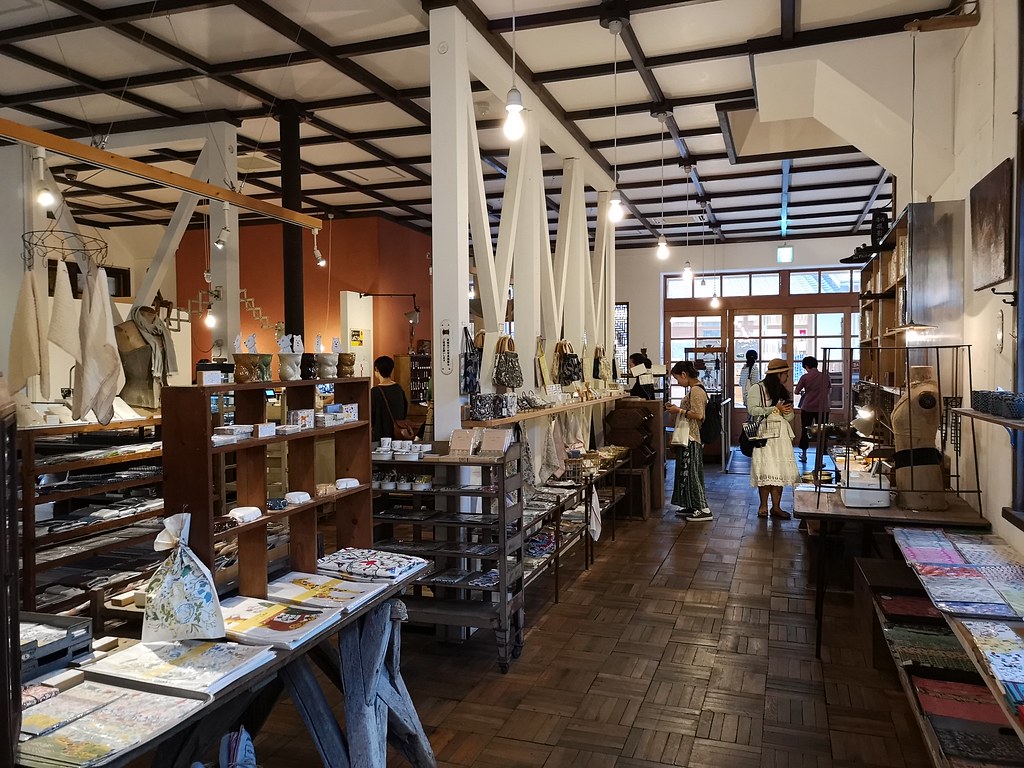
How to get here:
15 minutes on foot from Kurashiki JR Station.
Point 12: Grape-picking at Tomomien farm
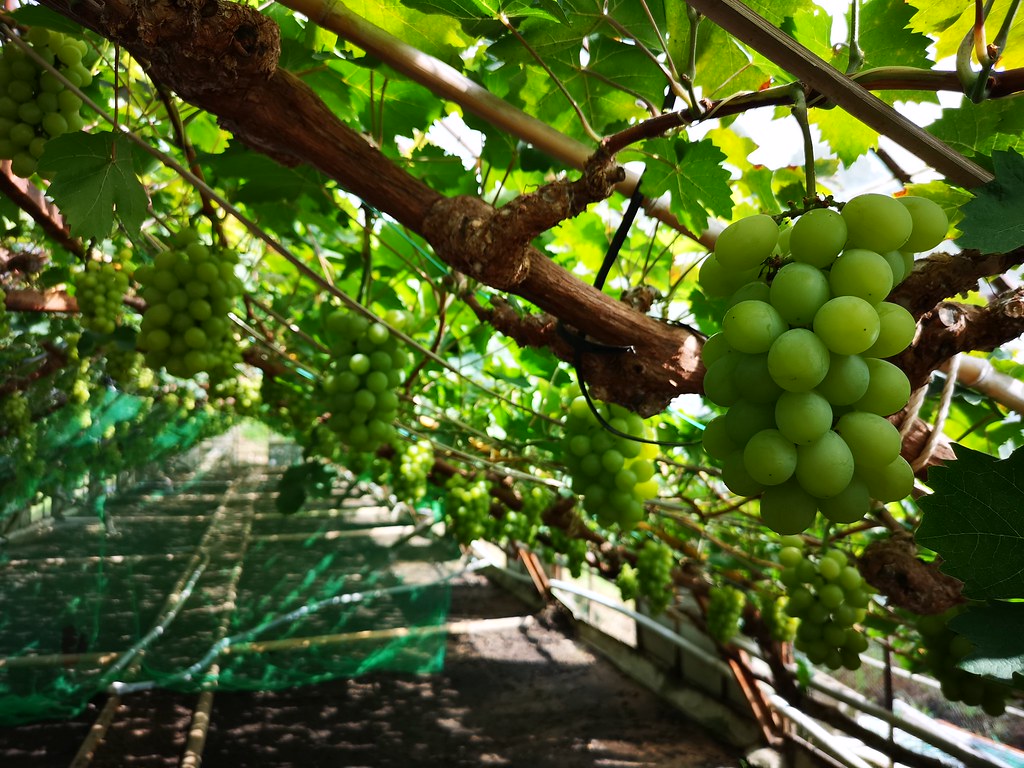
Okayama is well known for its peach farms, citrus fruit groves and vineyards. Being in an area with the least rainfall in Japan and receiving plenty of sun, Okayama perfect for grape-growing. Tomomien farm has been established for 40 years.
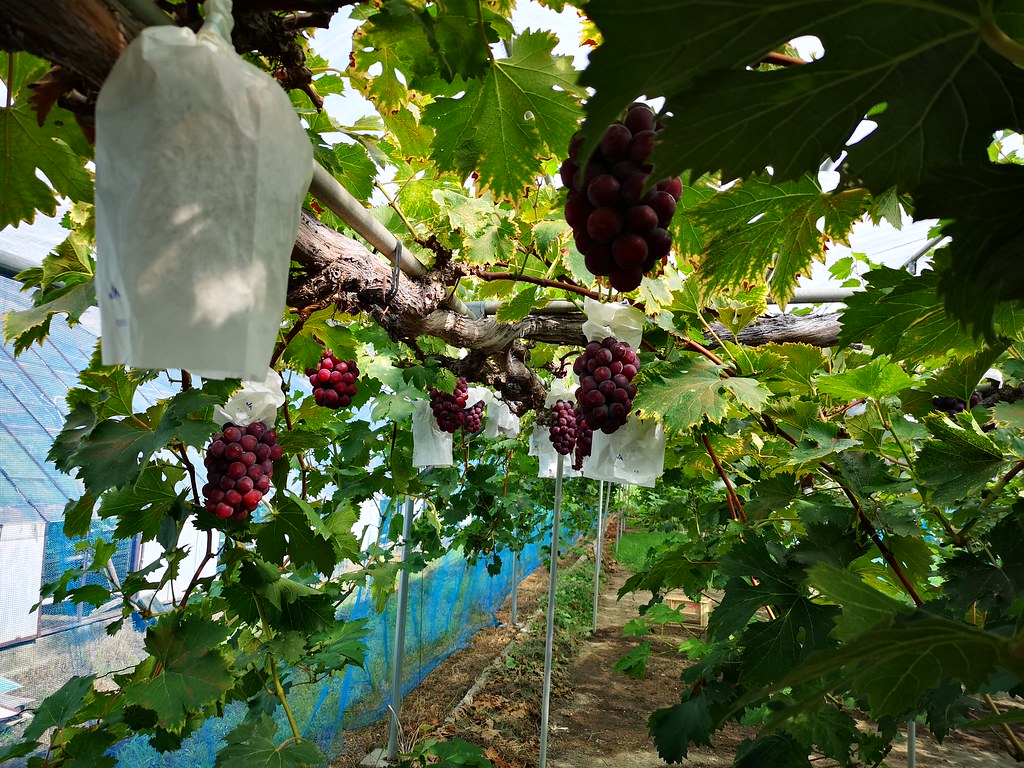
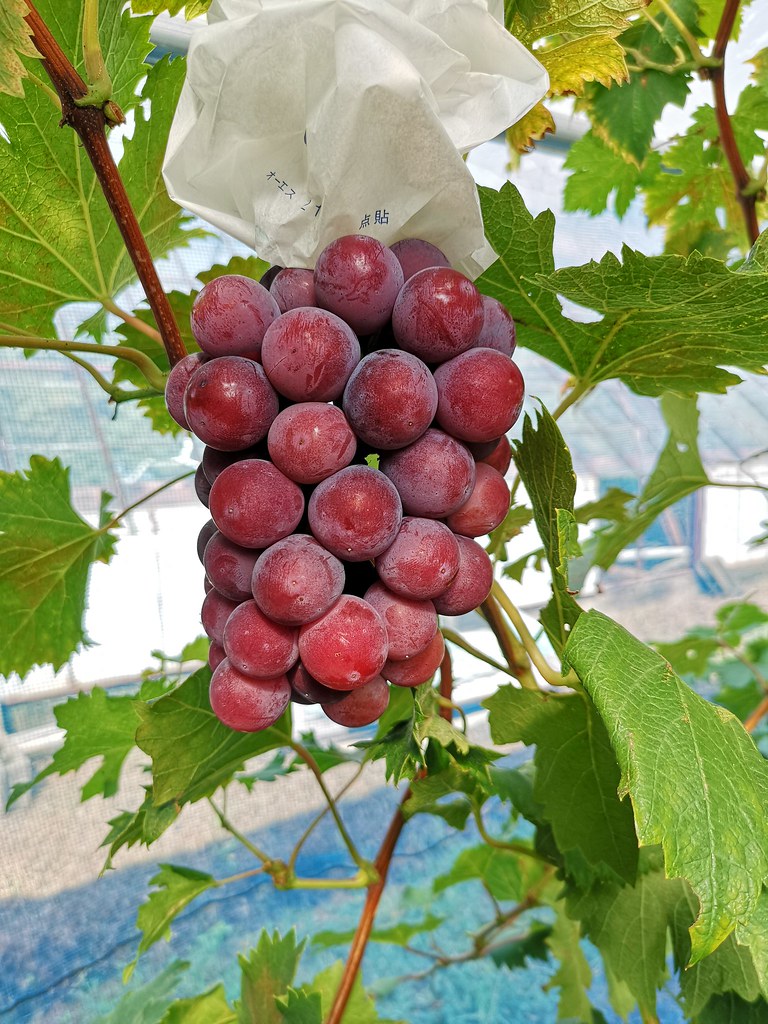
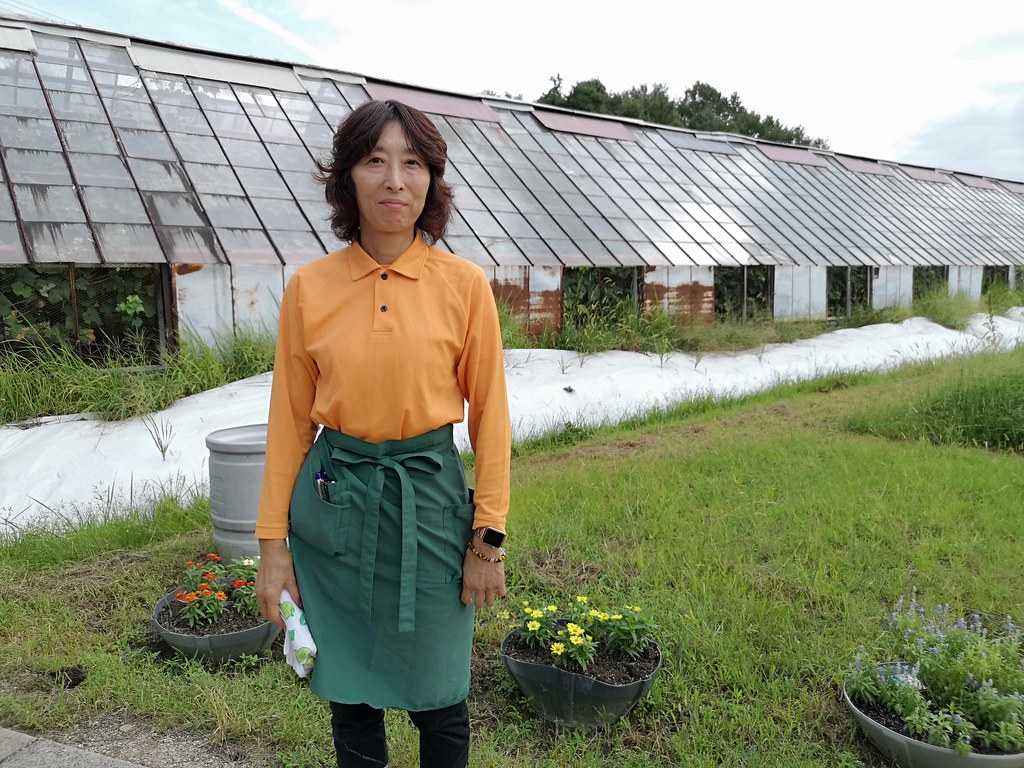
We had just missed the white peaches, so we went to pick pione grapes – a purple grape that closely resembles the Kyoho but is seedless. Four varieties of grapes are available at this farm: the pione (thick purple skin and seedless), Shine muscat (green and seedless), muscat (green with seeds) and Seto giants (large green seedless). A total of 25 varieties of peaches are grown at the farm, but people usually go for the Shimizu Hakuto, a traditional Japanese white peach which resembles a newborn baby’s bottom.
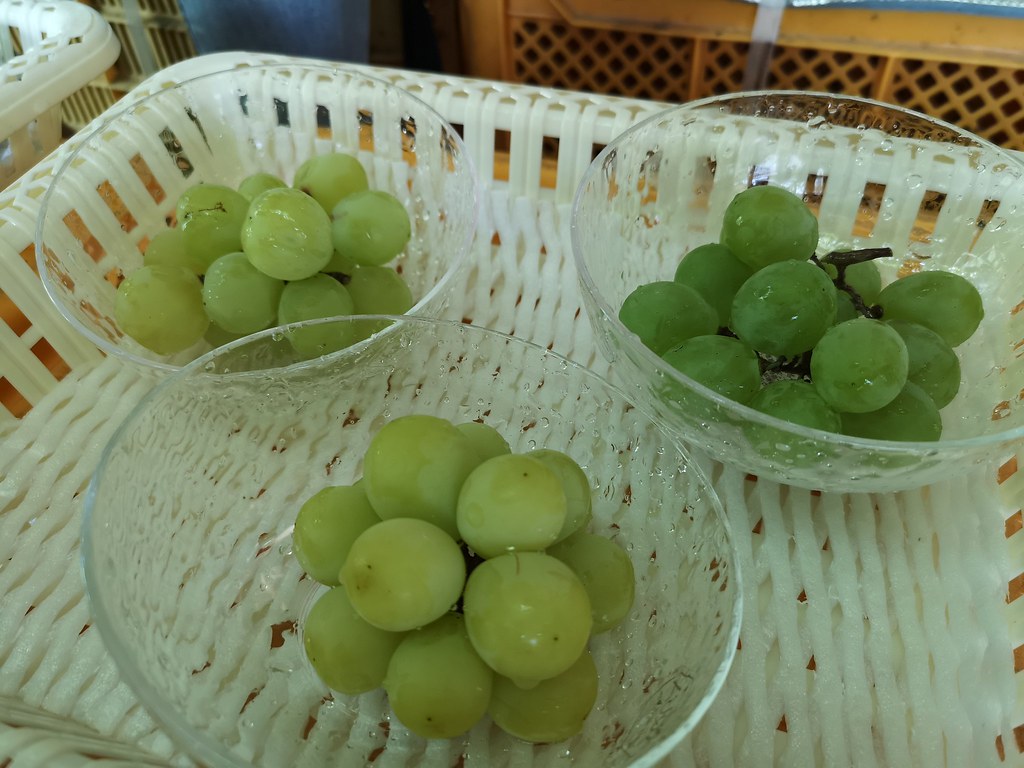
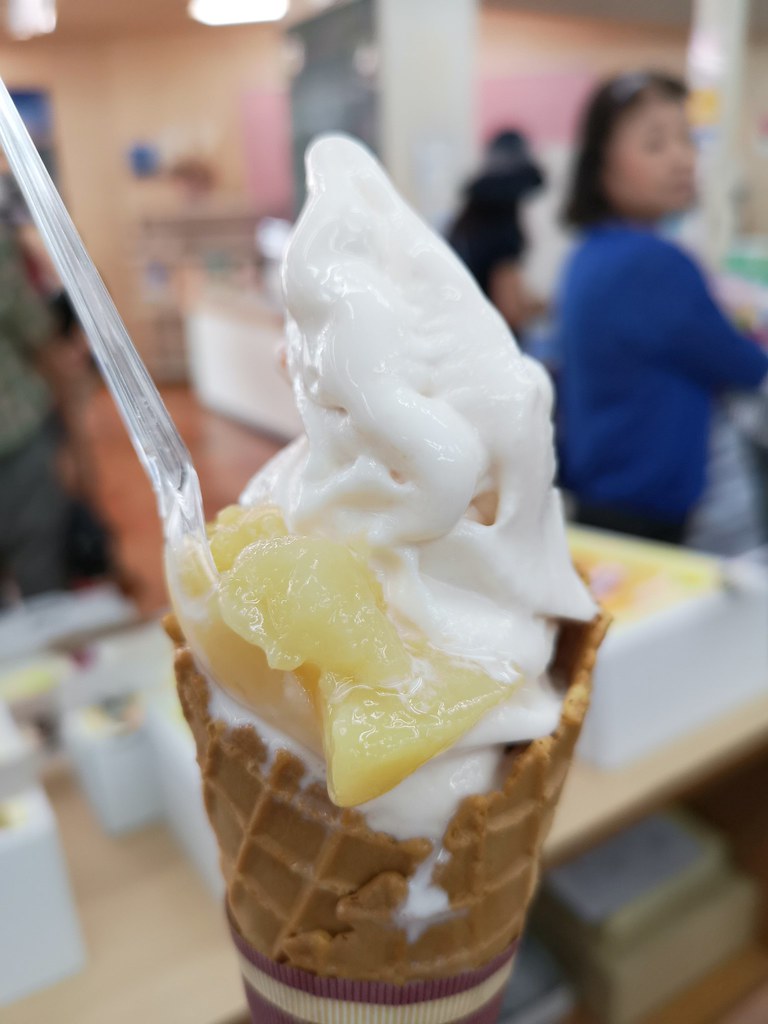
There’s a shop where you can pick up peaches, peach soft serve and other produce from the farm. Don’t worry, the staff will pack your purchases in sturdy cardboard boxes and as long as you hand-carry them carefully all the way back to Singapore, all your fruits will be fine.
Must-buys:
White peaches, peach liqueur, grapes… As much as you can afford and can carry home.
Best time to go:
From June to end August, pick white peaches (Shimizu Hakuto), October to November for late peach varieties. From June 25 to Oct 10, pick Shine muscat grapes.
Prices:
Pione/muscat grapes – 1,900 yen per bunch (online reservations only); Seto giants – 2,500 yen per bunch, Shine muscat – 2,700 yen per bunch. Customers will also get an additional 20 grapes for tasting on the spot. For peaches, you can pick two peaches and get another two to eat at 1,800 yen. If you just want to take home one peach and eat one on the spot, that’s 1,400 yen.
How to get there:
Self-drive.
Make reservations on their website here or here (English).
Point 13: Bizen pottery
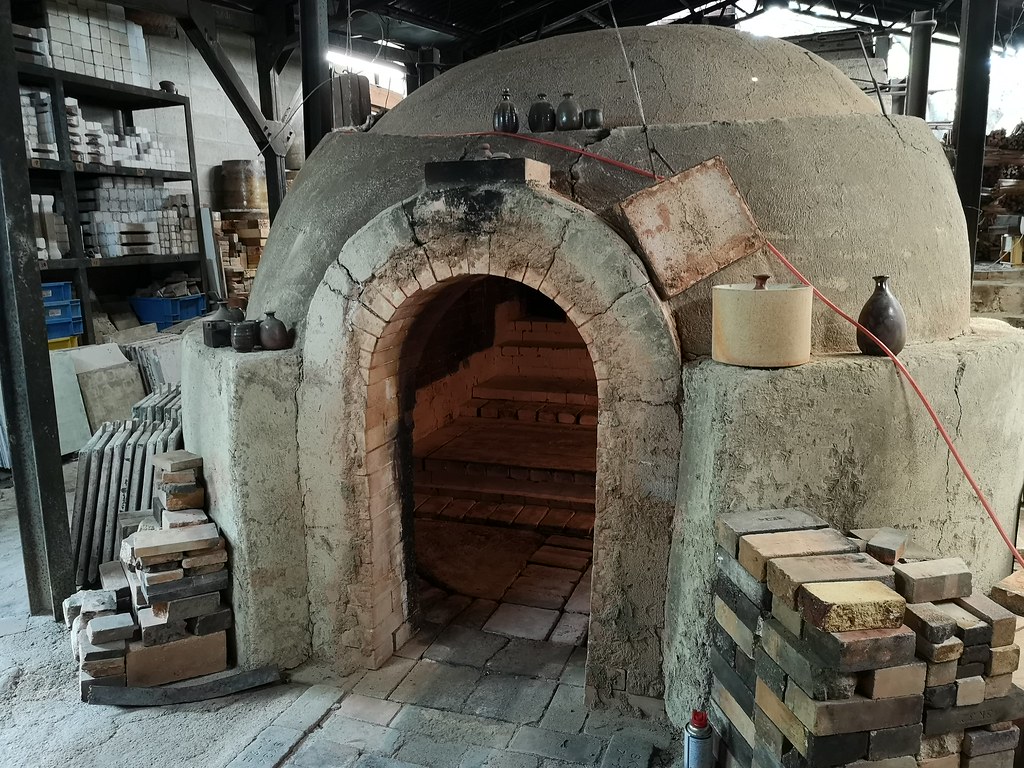
Bizen in Okayama is the name of a town, as well as the type of ceramic it is famous for producing. Dating back a whole millennium, Bizen pottery is a type of unglazed pottery without any painted-on patterns. Made with the iron-rich clay from the paddy fields in Bizen, the pottery takes on colours, patterns and a natural glaze during the firing process.
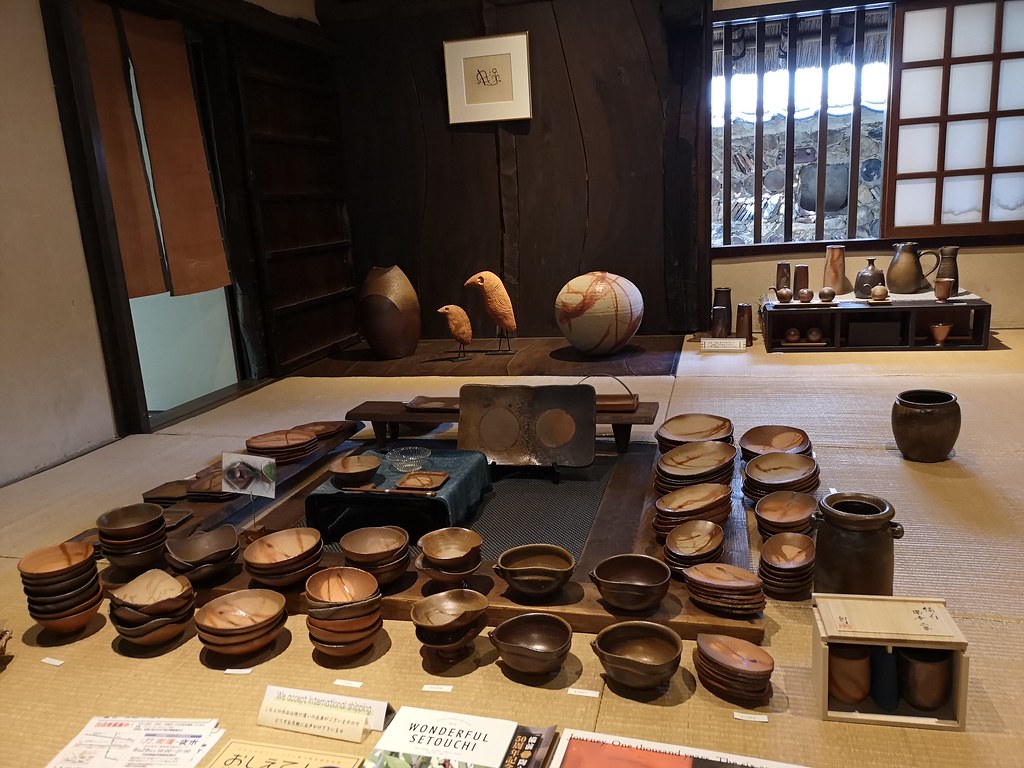
We visited Sensei So Isezaki’s traditional workshop to try our hand at making a bowl the Bizen way. As nephew to Japan’s living national treasure Jun Isezaki, Sensei So is keeping his pottery heritage alive and well. He shows us how he transforms lifeless balls of clay into beautiful vessels. His kiln is fired twice a year, once in spring and once in autumn, and our bowls will be mailed to us by November after being in the kiln for two weeks. This workshop costs 4,000 yen.
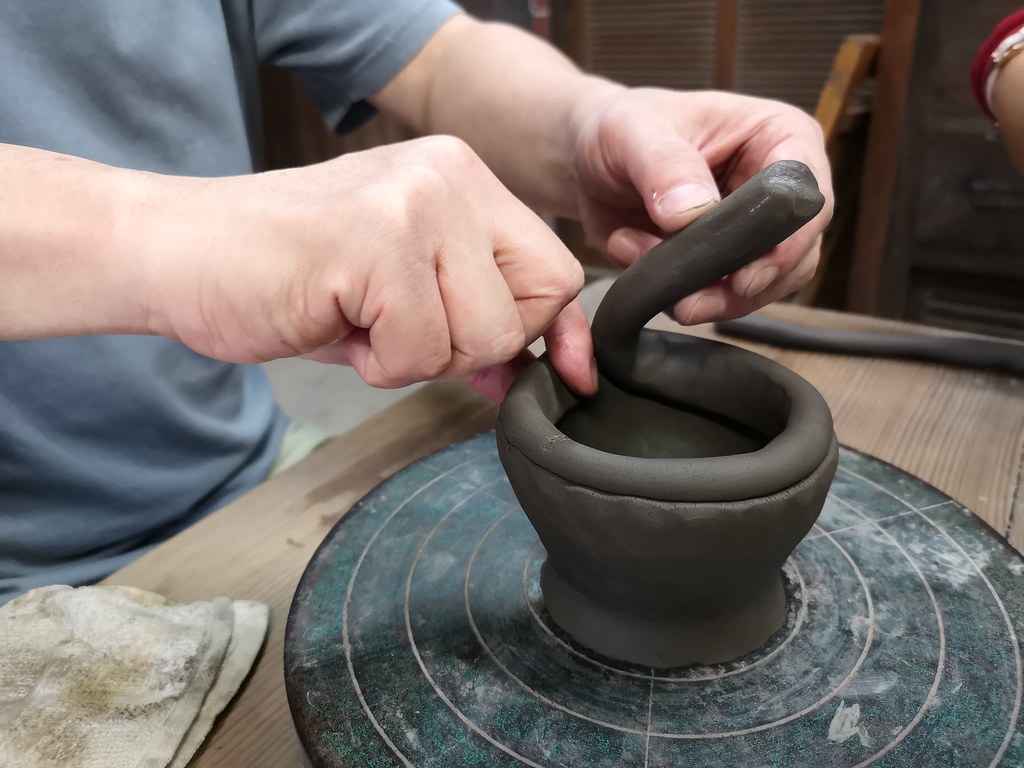
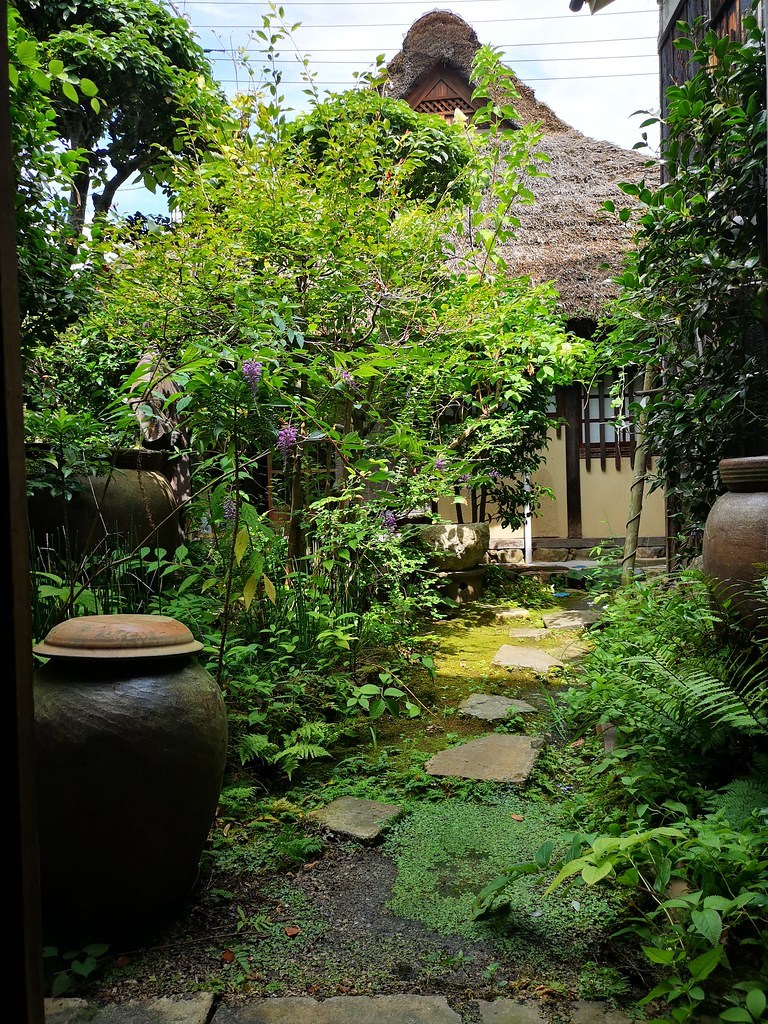
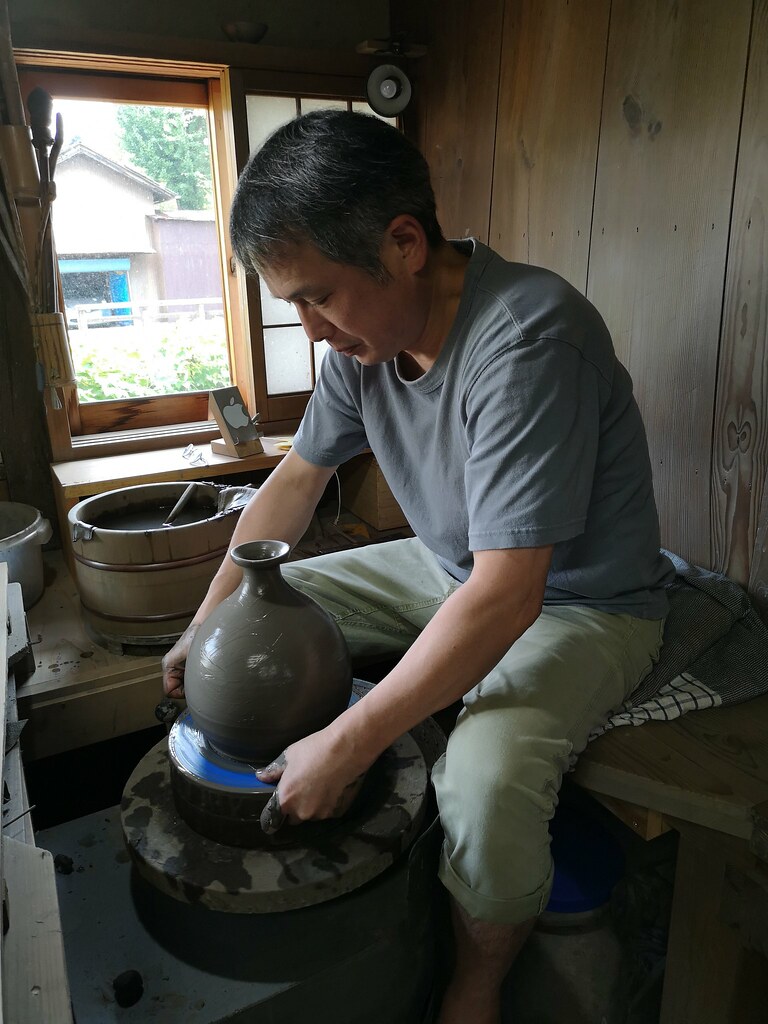
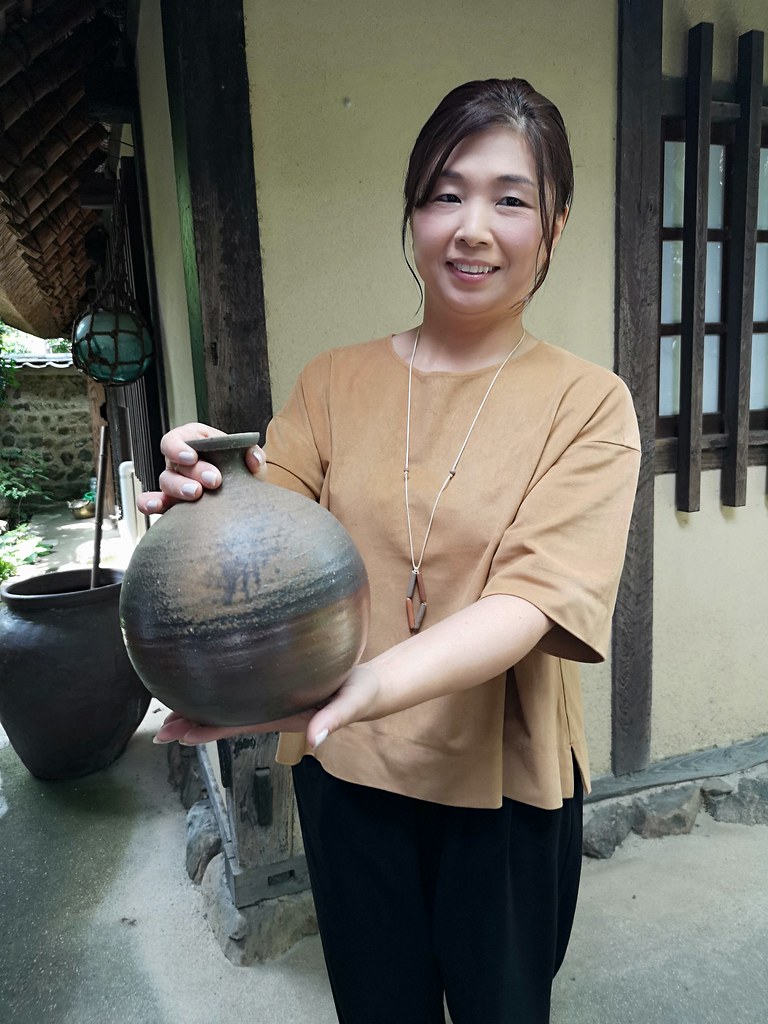
While we only visited one potter in Bizen, we learned that the entire town is great for exploring on foot. There’s a museum near the train station and various little pottery shops you can check out, as well as the remains of an old community kiln.
How to get here:
By train – from JR Okayama Station or JR Aioi Station, take the Ako Line to Inbe Station. Approximately 45 minutes. By car – take the Chugoku Expressway and exit via the Mimasaka Interchange and take National Highway Route 374. Approximately 55 minutes.
When to go:
Mid-October [this needs to be verified] is an ideal time to go as the various potters in Bizen (there are 300 to 350 of them) would be displaying their wares after the autumn firing of their kilns.
Point 14: Koraku-en
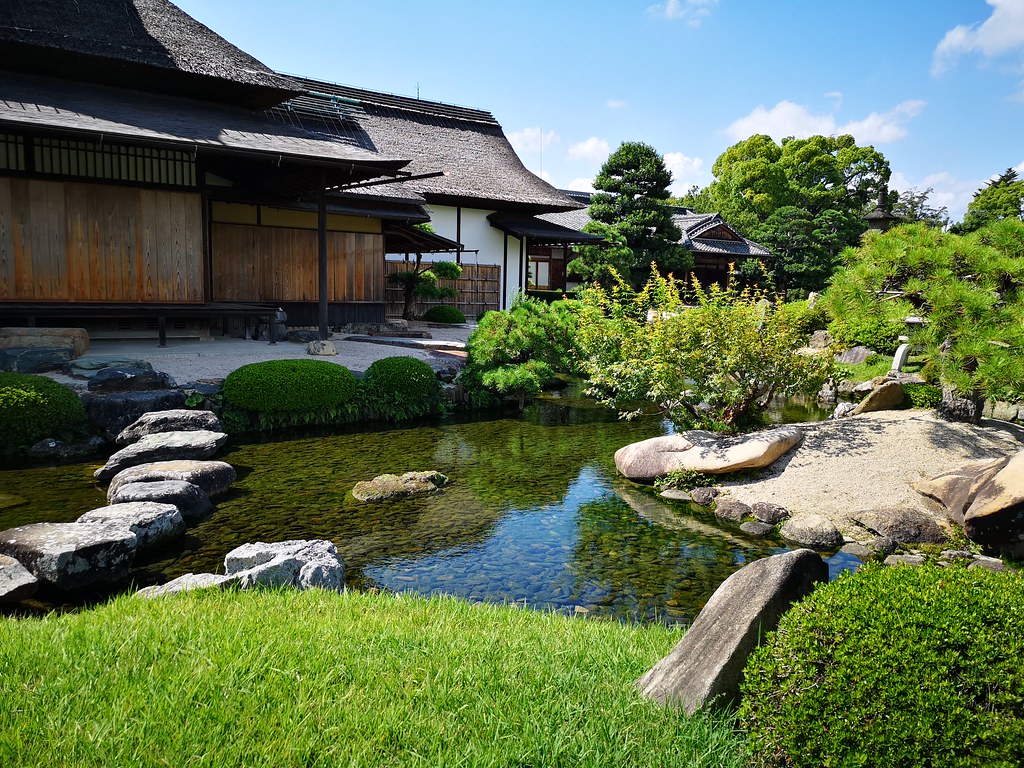
Koraku-en, or Korakuen Garden, is ranked as one of the top three landscape gardens of Japan. It is a formal Japanese garden built around 1700 by Ikeda Tsunamasa, a feudal lord who used it as a place of leisure.
The garden was designed in the kaiyu (“scenic promenade”) style which presents the visitor with a new view at every turn of the path. If you pay attention, there are several elements in the panorama viewable from the feudal lord’s living room En’yo-tei House: water, growing of trees, arrangement of rocks and landscape elements like bridges and stone pagodas are all combined together. The silhouette of the garden has remained as it was 300 years ago, with only small modifications. Near the En’yo-tei House there is a theatre stage, where traditional Japanese art performances are often staged.
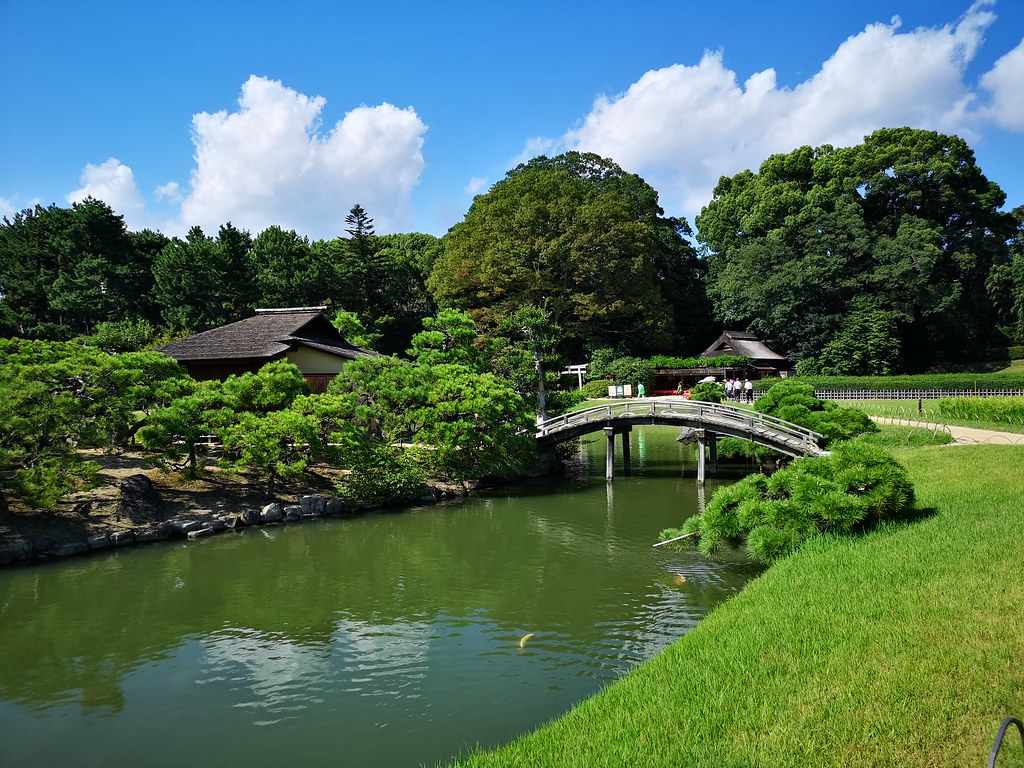
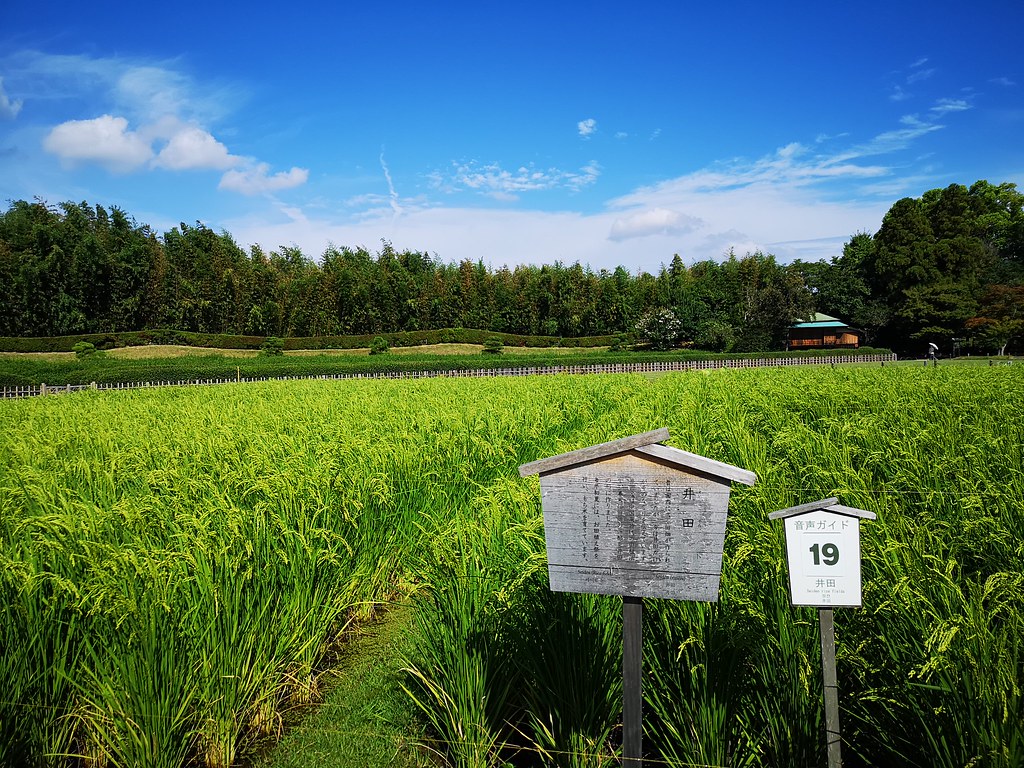
Our guide shared that Koraku-en was not designed as a strolling garden, as the feudal lord used to enjoy it visiting only the buildings and admiring the view from certain spots, while seated. Our favourite spot in the garden was a pavilion which had a stream running through it – perfect for seeking reprieve from the summer heat. Be warned though, that you’re not supposed to run your feet through the water due to hygiene reasons.
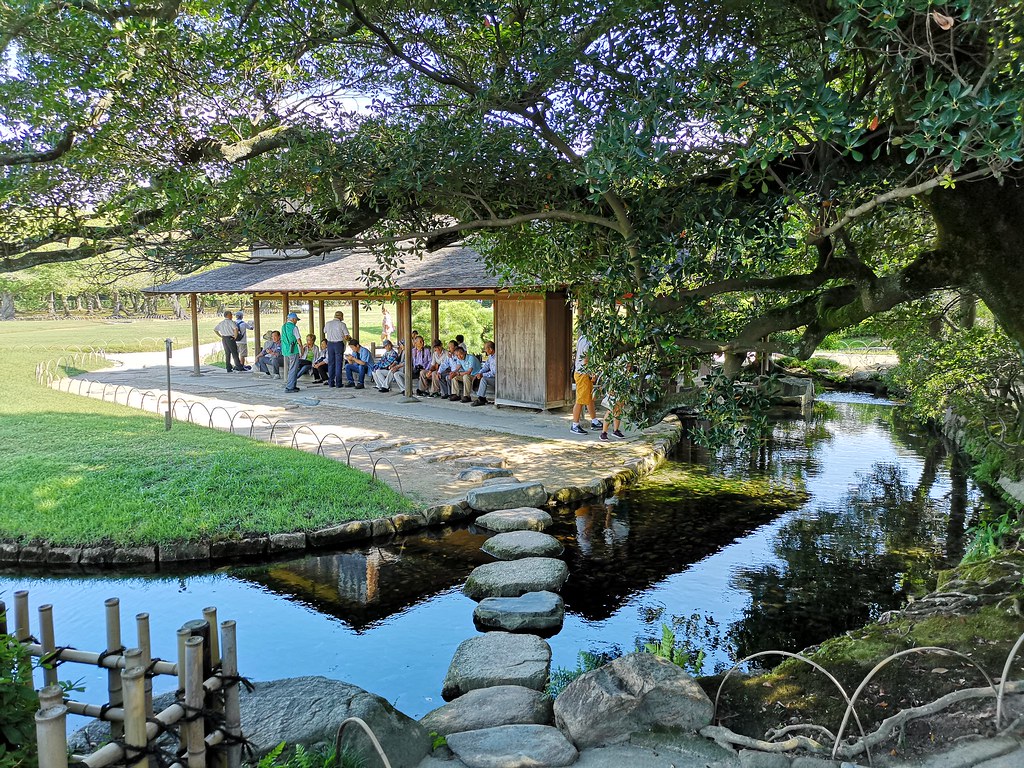
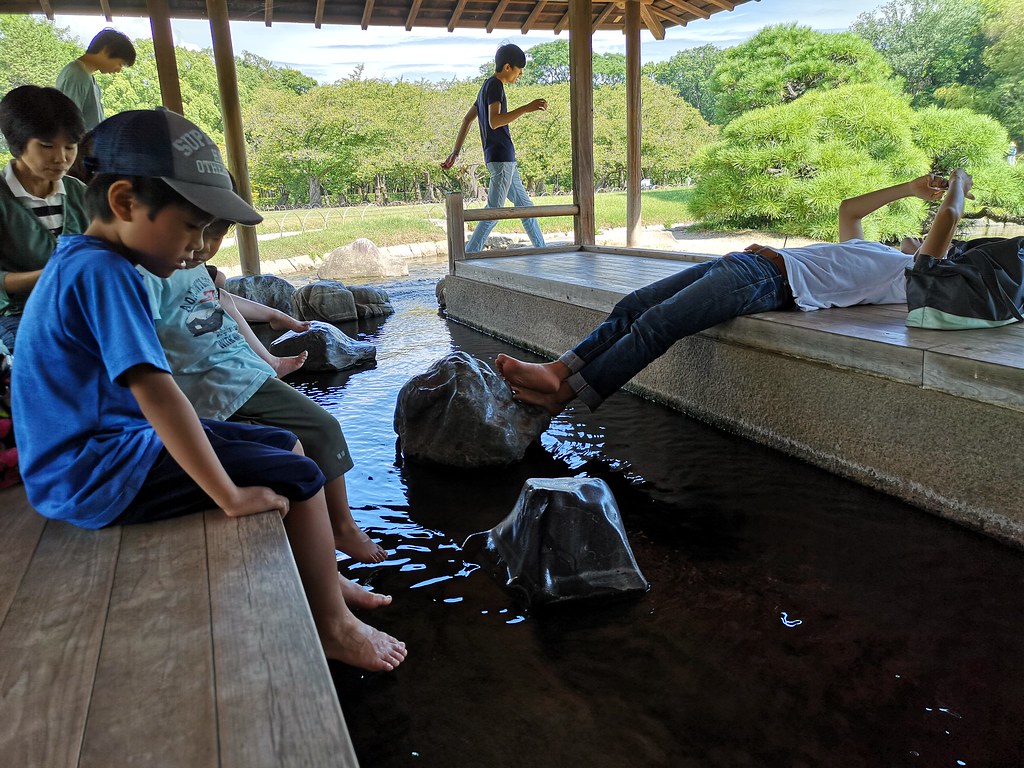
Sadly though, artillery shelling during World War II has damaged a woody forest in the garden that used to be filled with cherry trees and maple trees, turning the wood pink and green in the spring and red and green in the autumn. Today a green grove replaces it. Moreover, Koraku-en houses a cherry grove featuring about 50 extremely delicate Somei yoshino trees.
How to get here:
It takes 20 minutes on foot from JR Okayama Station, 4 minutes by Higashiyama-bound streetcar stop, and 10 minutes by foot from Shiroshita Station.
When to go: January, during New Year’s, a pair of tancho cranes living in the aviary are released to roam freely on the garden grounds. On the last Sunday of May, a special ceremony is held where young girls dress up in beautiful dresses perform a traditional dance and then they harvest the tea from a small tea plantation within the garden.
For more information, visit the official website.
For more information on Okayama, visit the Okayama Prefecture Official Tourism Guide.
To read Part 1: Hiroshima, click here.
To read Part 2: Ehime, click here.
Want to find out more about how you can plan a holiday in Hiroshima, Ehime and Okayama? Meet the writer herself (me) at an exclusive forum hosted by Shikoku Transportation Bureau, Okayama Prefecture, Ehime Prefecture, Hiroshima Prefecture. I’ll be speaking together with Weekender.sg‘s chief editor Sabrina Cao, and Sock Peng, the owner of Mylovelybluesky《蓝天白云数格子》. High-tea will be provided and there’s a chance to win attractive prizes* at the event!
Event details:
Time: 2-4pm
*Prizes: SilkAir return flight ticket (Singapore-Hiroshima), JR Nationwide 7-day pass, Kumanofude make-up brush, Imabari towel, Kurashiki canvas tote bag.
Register your interest here.
Unless otherwise stated, all of the images in this post have been taken by me with a Huawei P20 Pro.











